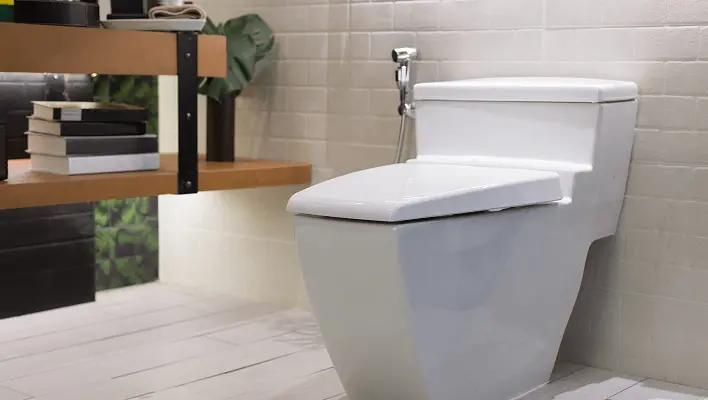Who Invented Toilets: A Historical Journey of Toilet Inventions

Toilet inventions have transformed the basic necessity of sanitation into a realm of innovation and convenience. From the early days of simple chamber pots to the modern marvels of smart toilets with advanced features, these inventions have significantly improved hygiene, water conservation, and overall user experience. Exploring the evolution of toilet technology unveils a fascinating journey of creativity and engineering aimed at enhancing our daily lives.
Also Read: How To Turn off Water To Toilet
Content
Who Invented the Toilet?
The invention of the toilet is a tale as old as human civilization itself. While the modern toilet we know today has undergone numerous transformations, it is crucial to acknowledge the pioneers who paved the way for this indispensable fixture.
When Were Toilets Invented?
Toilets have a rich history dating back to ancient times. The first semblances of toilets can be traced to the Indus Valley Civilization (around 3300–1300 BCE), where rudimentary drainage systems and waste disposal methods were implemented. The concept of a designated area for human waste evolved over the centuries, leading to various toilet inventions.
Brief Toilet History and Facts
In ancient Rome, public toilets known as “public latrines” were prevalent, featuring communal seating and a primitive water flow system for waste disposal. However, it wasn’t until the 16th century that Sir John Harrington, an English courtier, is credited with inventing the first flush toilet. His design, though innovative, did not gain widespread popularity.
When and Who Invented the Flush Toilet?
The 19th century witnessed significant advancements in toilet technology. The true pioneer of the flush toilet is Sir Thomas Crapper, an English plumber, who popularized the flushing mechanism in the late 1800s. Although he did not invent the flush toilet, Crapper’s innovations and marketing prowess played a crucial role in its widespread adoption.
Who Invented the Toilet Flusher?
The toilet flusher, a fundamental component of modern toilets, was refined by Alexander Cumming in 1775. Cumming’s design incorporated a sliding valve that allowed water to escape, paving the way for efficient flushing mechanisms in subsequent toilet inventions.
Who Invented the Toilet Bowl?
The inventor of the toilet bowl is not attributed to a single individual but rather to the collective evolution of toilet design. The concept of a bowl-shaped receptacle to collect waste gradually evolved over centuries, with contributions from various cultures and inventors.
Who Invented the Toilet Seat?
The invention of the toilet seat is not attributed to a specific individual, as it is an integral part of toilet design that evolved over time. Early toilet seats were often made of wood or other materials, adapting to the changing needs and preferences of users.
Who Invented Toilet Seat Covers?
Toilet seat covers, designed for hygiene and comfort, became popular in the early 20th century. The specific inventor is not well-documented, but their introduction marked a significant step in improving sanitation practices in public restrooms.
Who Invented the Modern Toilet?

The modern toilet, as we know it, owes much to the ingenuity of Sir Thomas Crapper and other innovators who contributed to the refinement of toilet design. Crapper’s contributions, including the ballcock mechanism for tank filling, played a pivotal role in shaping the modern toilet.
Who Invented the Toilet Plunger?
The invention of the toilet plunger is attributed to John S. Hawley, who patented the design in 1874. The rubber suction cup attached to a wooden handle has since become a standard tool for clearing toilet blockages.
What Are Modern Toilets Made Of?
Modern toilets are typically made of vitreous china or porcelain, materials known for their durability and ease of cleaning. These materials provide a smooth, non-porous surface, minimizing the buildup of bacteria and ensuring a hygienic environment.
FAQs
Who is the American toilet inventor?
While many contributors played a role in the development of toilets, Sir Thomas Crapper, an Englishman, is often mistakenly associated with being American. However, his impact on toilet design and promotion extended beyond borders.
When did toilets become common in households?
The widespread adoption of toilets in households occurred during the 20th century, with indoor plumbing becoming more prevalent. In the early 1900s, innovations in sewer systems and plumbing infrastructure facilitated the installation of toilets in homes.
Also Read: How to Unclog a Toilet like a Pro Plumber?
Conclusion
The history of toilet invention is a fascinating journey through time, reflecting the continuous quest for improved sanitation and comfort. From ancient civilizations to the present day, the evolution of the toilet showcases the innovative spirit of humanity and the desire for better hygiene practices. Today’s modern toilets stand as a testament to centuries of ingenuity and progress in the quest for the perfect throne.












